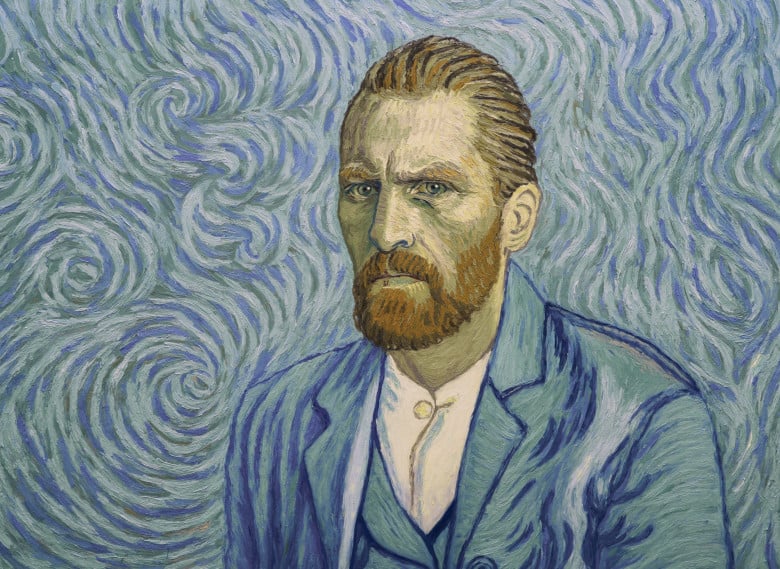[pullquote][/pullquote]The biographical animated film “Loving Vincent” carries us through the later life of 19th century Dutch painter Vincent van Gogh in approximately 65,000 frames, each one hand-painted over in oil paint in the Post-impressionist style of Van Gogh. Over 100 artists were assembled by filmmakers Dorota Kobiela and Hugh Welchman to paint over the live-action footage. “Loving Vincent” is the first ever feature film that is completed painted.
Armand Roulin (Douglas Booth), son of a postmaster, is given the task of delivering a letter from the late Vincent van Gogh to his brother Theo van Gogh. When he learns that Theo already passed away, Armand decides to seek out van Gogh’s doctor, Doctor Gachet (Jerome Flynn), who Armand thinks should have the letter. As he travels from Arles to Auvers-sur-Oise, Armand encounters various acquaintances of the late artist who each give him a better understanding of the kind of person van Gogh was. The more he talks with people, the more he becomes preoccupied with the unresolved question of van Gogh’s death. Some say he committed suicide while others say he was killed while painting alone in the field. Armand cannot accept that a man could transform from completely calm to suicidal in six weeks. Armand’s simple task of delivering a letter turns into an extended mystery case. The film explores this question and construct’s van Gogh’s enigmatic character bit by bit through fictional interviews conducted with real-life characters.
Over the course of the film, the movie paints a touching portrait of van Gogh. As Armand travels from town to town and people recount their experiences with van Gogh, the film carries us back to the artist’s last few months through scenes constructed by the memories and flashbacks of Armand’s interlocutors. Van Gogh was a sensitive, solitary and often misunderstood man, prone to both depression and extreme elation. At the same time, the tortured artist deeply wanted to connect with humanity. Painting was his way of communicating and establishing that connection with a world he felt fundamentally alienated from. His brawny brushstrokes capture his inner turbulence. Van Gogh’s artistic feat was in aestheticizing the very chaos that he constantly confronted and could not escape. The film successfully underscores the total unity between the artist’s trademark style and his tempestuous character by animating those brushstrokes. Each shot unfolds in pulsating, shape-shifting brushstrokes in vibrant colors. One feels as though the film is being painted as we watch it.
The mesmerizing style of the film, however, overpowers the substance of its plot. The story itself is not particularly deep or thought-provoking. The plot is relatively simple: Armand moves from place to place, and acquaintances of van Gogh recall memories they had of the painter. The flashbacks are in black and white and are done in a style different from the colorful, dynamic scenes in van Gogh’s style from the present scenes. The same story told in live-action would have been underwhelming. What we have here, then, is more an impressive showcase of technique, which engages the audience much more than the narrative. Ultimately, the simple story of the last days of van Gogh’s life combined with the stunning animation masterfully captures the world of van Gogh and pays tribute to his tremendous work and legacy. The film stands on its own as a work of art and an innovative model for filmmaking.
“Loving Vincent” is now showing at the Aquarius Theatre in Palo Alto and in various theaters around the nation.
Contact Atussa Mohtasham at atussa95 ‘at’ stanford.edu.
